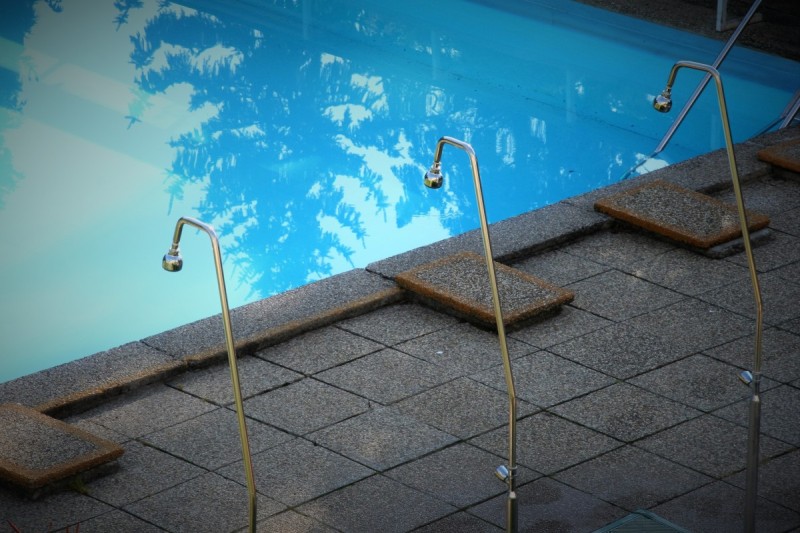How to Know Your Pool Is Leaking
Summary
– Step 1: Determine the cause of the low water level in your pool
– Step 2: Turn off your pool’s filtration system
– Step 3: Case 1: Search for a leak in the pool’s technical room
– Case 2: Search for a leak in the pool
If the water level in your pool is dropping inevitably, it may be a leak. But it is not always easy to find the source of the leak, as there are many possible causes.
However, before you call in a professional, we’ll explain here how to find a leak in a pool.
1. Determine the cause of the low water level in your pool
If you suspect that your pool is leaking, you have likely noticed a significant drop in water level.
First, you should know that water loss in a pool can be due to natural evaporation, which occurs when the water temperature is higher than the air temperature (i.e. mainly at night).
To find out if evaporation is causing the water level to drop
– place a container filled with water at the edge of the pool;
– Mark a water level marker in the container and another one in the pool (with adhesive tape, for example);
– wait 24 hours;
– compare the water level: if the water level in the pool is higher than the water level in the container, there is a leak…
– The sewage mode of your filtration system causes your pool to lose water when cleaning the filter. However, there are two other possibilities:
– Water is expelled from the pool by splashing, diving, children playing…
2. Turn off your pool’s filtration system

First, turn off the filtration system to find a leak in a pool.
After 24 hours, you have two options:
– The water level in the pool has stopped dropping, so the leak is in the equipment room.
The pool’s water level has dropped again: the leak is located in the pool’s frame or in part to be sealed.
Warning: if your pool is composed of a liner-type membrane and leaks significantly, immediately turn on the filtration and call a professional. A liner must be constantly immersed to ensure its good performance.
3. Case 1: Search for a leak from the pool’s technical room

If your pool is no longer leaking after the filtration system has been turned off, it means that the leak is located in the pool’s equipment room or the underground pipes.
In the case of a “frank” leak on your pump, the floor of the technical room should be wet.
In the equipment room, check the following items:
– The 6-way valve star seal may be worn or deteriorated, and it may be leaking a thin stream of water to the sewer. This is almost certain if you see a little water spilling between the valve body and the valve cover.
– The valve’s ball seal, cover seal, or washers may also show signs of wear. You can disassemble the valve according to the manufacturer’s instructions.
– The filter bowl may have micro-cracks.
In the case of buried pipes, the job is more complicated. Indeed, detecting a leak without a direct visual is not very obvious. However, a few signs can help you:
– The appearance of a wet area around the basin which, rising by capillary action, causes stains.
– Areas of the garden that are wetter or where the grass is greener than elsewhere.
Tip: If your search is unsuccessful, call in an expert who uses an ultrasound device to locate leaks without breaking or digging holes.
Case 2: Searching for a leak in the pool

If the water level in the pool continues to drop even after the filtration system has been turned off, the problem is located before the equipment room.
– Let the leak run until the water level has stabilized.
– When the water level does not drop anymore, you can deduce that the leak is just above the technical room.
– Check all the parts to be sealed that are at this level: skimmers, discharge nozzle, broom outlet, projectors and stairs.
– If your pool is equipped with a liner, check all the sealing flanges of the parts to be sealed, as well as the fixing screws.
– If your pool is tiled or painted, look for cracks by visually checking the integrity of the entire structure.
Tip: Again, if your search is unsuccessful, contact a specialist who uses fluorescein, a dye that indicates possible leaks by its movement in the water, and a micro-camera capable of providing a clear view of the inside of the pipe.




My aunt wants to make sure her pool is ready before the end of this month so her kids can enjoy parties and swimming with their friends this summer. Your advice to see if the floor is wet in the technical room to see if there are any leaks will be very helpful. Maybe she can hire a professional to check for pool leaks or other problems to ensure everything is ready for her kids to have fun and be safe.
Hi Erika. I am delighted you found this article helpful. Please do let us know further what has happened to your aunt’s pool.